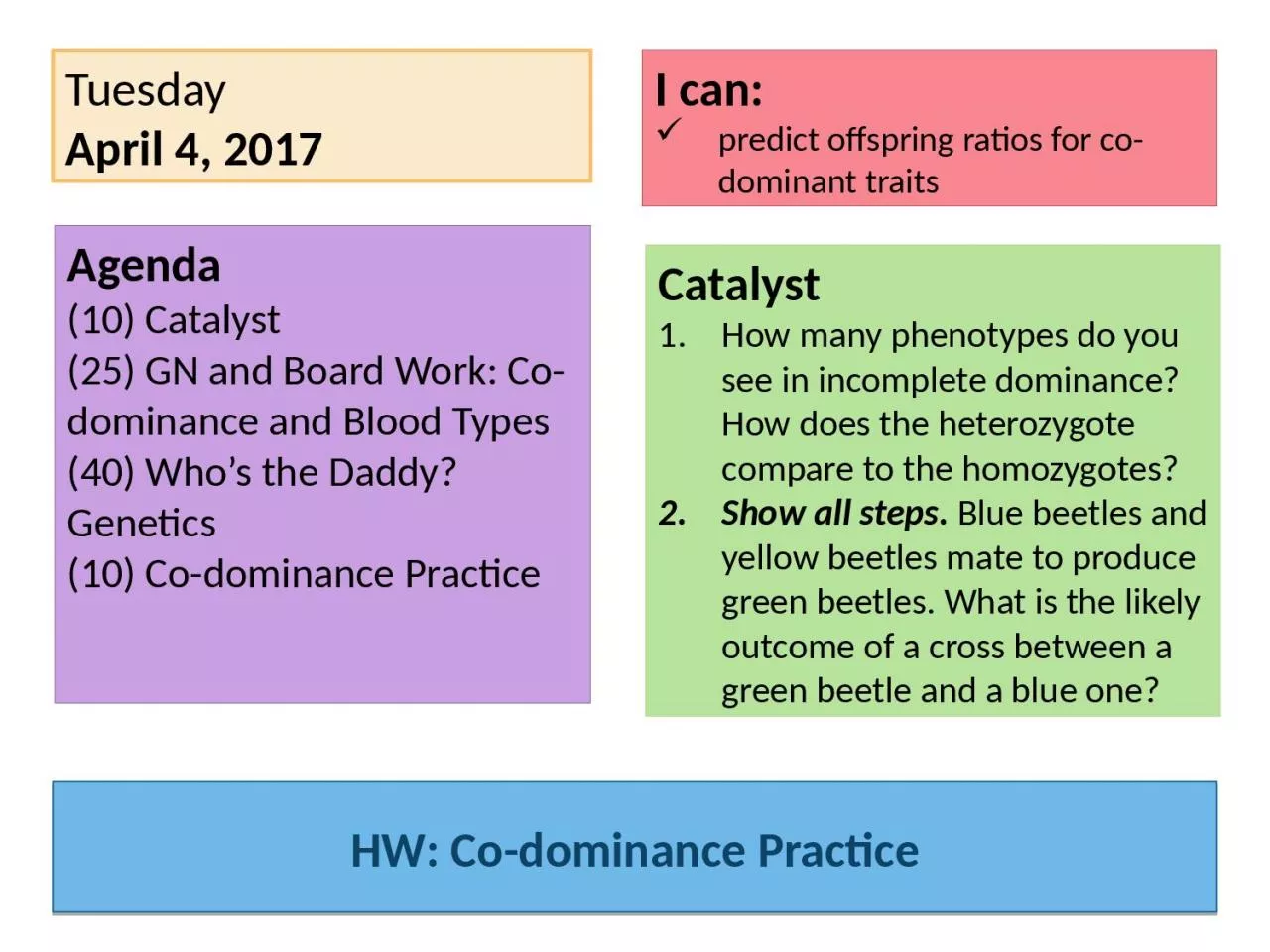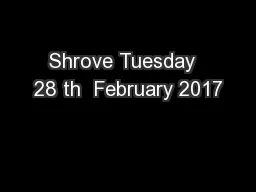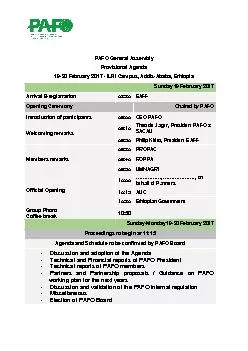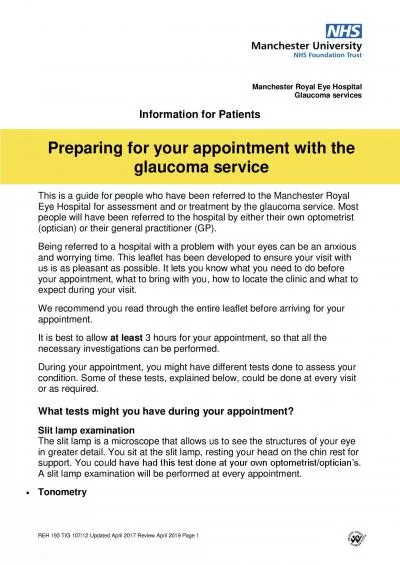PPT-Tuesday April 4, 2017 Agenda
Author : kylie | Published Date : 2022-06-11
10 Catalyst 25 GN and Board Work Codominance and Blood Types 40 Whos the Daddy Genetics 10 Codominance Practice I can predict offspring ratios for codominant
Presentation Embed Code
Download Presentation
Download Presentation The PPT/PDF document "Tuesday April 4, 2017 Agenda" is the property of its rightful owner. Permission is granted to download and print the materials on this website for personal, non-commercial use only, and to display it on your personal computer provided you do not modify the materials and that you retain all copyright notices contained in the materials. By downloading content from our website, you accept the terms of this agreement.
Tuesday April 4, 2017 Agenda: Transcript
Download Rules Of Document
"Tuesday April 4, 2017 Agenda"The content belongs to its owner. You may download and print it for personal use, without modification, and keep all copyright notices. By downloading, you agree to these terms.
Related Documents














